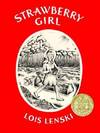
Experimental Investigation of Table-Moving in Journal of the Franklin Institute 56 pp. 328-333, 1853
by Faraday, Michael
- Used
- Hardcover
- first
- Condition
- See description
- Seller
-
West Branch, Iowa, United States
Payment Methods Accepted
About This Item
Philadelphia: Franklin Institute, 1853. 1st Edition. 1853 PAPER BY MICHAEL FARADAY (reprinted from the London Athenaeum) PROVING THAT THE SUPERNATURAL PHENOMENA OF TABLE-TURNING HAPPENS AS THE RESULT OF PARTICIPANTS UNCONSCIOUSLY MOVING THE TABLES THEMSELVES. This remains the accepted explanation today.
"Table-turning was among the many supernatural phenomena that caught the public's attention during the 19th century. Similar to the movement of the planchette during a Ouija board séance, a table would begin moving among the participants sitting around it.
"Michael Faraday came out in public against table-turning and all supernatural séance activities. He censured both the public and the British education system for buying into it. But many continued to attribute these table movements to an invisible force, like electricity or magnetism.
"Always the scientist, Faraday tried using a variety of insulators, such as wood and rubber, to interfere with the table's movement, and observed no difference in the movement. He concluded that no special force was at work. Finally, in 1853 [and presented in this paper] Faraday conducted an experiment proving (to him and most other scientists) that table-turning was the result of participants' ideomotor action" (MIT Special Collections). As he wrote, "tables are moved simply by unconscious muscular action, having nothing to do with electricity, magnetism, attraction, or any unknown force whatever, much less, as some have boldly asserted, the motion of the earth, or supernatural agency" (Faraday, 1853). Again, this remains the accepted explanation today. CONDITION & DETAILS: Philadelphia: The Franklin Institute. Ex-libris with a plate on the front pastedown and a small stamp on the title page. 8vo. (9 x 6 inches). [6], 441, [3]. Bound in three quarter calf over marbled boards; minor scuffing and rubbing at the edges. Four raised bands, gilt-lettered and ruled at the spine. Bright and very clean within. Very good.
"Table-turning was among the many supernatural phenomena that caught the public's attention during the 19th century. Similar to the movement of the planchette during a Ouija board séance, a table would begin moving among the participants sitting around it.
"Michael Faraday came out in public against table-turning and all supernatural séance activities. He censured both the public and the British education system for buying into it. But many continued to attribute these table movements to an invisible force, like electricity or magnetism.
"Always the scientist, Faraday tried using a variety of insulators, such as wood and rubber, to interfere with the table's movement, and observed no difference in the movement. He concluded that no special force was at work. Finally, in 1853 [and presented in this paper] Faraday conducted an experiment proving (to him and most other scientists) that table-turning was the result of participants' ideomotor action" (MIT Special Collections). As he wrote, "tables are moved simply by unconscious muscular action, having nothing to do with electricity, magnetism, attraction, or any unknown force whatever, much less, as some have boldly asserted, the motion of the earth, or supernatural agency" (Faraday, 1853). Again, this remains the accepted explanation today. CONDITION & DETAILS: Philadelphia: The Franklin Institute. Ex-libris with a plate on the front pastedown and a small stamp on the title page. 8vo. (9 x 6 inches). [6], 441, [3]. Bound in three quarter calf over marbled boards; minor scuffing and rubbing at the edges. Four raised bands, gilt-lettered and ruled at the spine. Bright and very clean within. Very good.
Reviews
(Log in or Create an Account first!)
Details
- Bookseller
- Atticus Rare Books
(US)
- Bookseller's Inventory #
- 1136
- Title
- Experimental Investigation of Table-Moving in Journal of the Franklin Institute 56 pp. 328-333, 1853
- Author
- Faraday, Michael
- Book Condition
- Used
- Quantity Available
- 1
- Edition
- 1st Edition
- Binding
- Hardcover
- Publisher
- Franklin Institute
- Place of Publication
- Philadelphia
- Date Published
- 1853
Terms of Sale
Atticus Rare Books
30 day return guarantee, with full refund including shipping costs for up to 30 days after delivery if an item arrives misdescribed or damaged.
About the Seller
Atticus Rare Books
Biblio member since 2010
West Branch, Iowa
About Atticus Rare Books
We specialize in rare and unusual antiquarian books in the sciences and the history of science. Additionally, we specialize in 20th century physics, mathematics, and astronomy.
Glossary
Some terminology that may be used in this description includes:
- Rubbing
- Abrasion or wear to the surface. Usually used in reference to a book's boards or dust-jacket.
- Plate
- Full page illustration or photograph. Plates are printed separately from the text of the book, and bound in at production. I.e.,...
- Calf
- Calf or calf hide is a common form of leather binding. Calf binding is naturally a light brown but there are ways to treat the...
- Title Page
- A page at the front of a book which may contain the title of the book, any subtitles, the authors, contributors, editors, the...
- Edges
- The collective of the top, fore and bottom edges of the text block of the book, being that part of the edges of the pages of a...
- Raised Band(s)
- Raised bands refer to the ridges that protrude slightly from the spine on leather bound books. The bands are created in the...
- Spine
- The outer portion of a book which covers the actual binding. The spine usually faces outward when a book is placed on a shelf....

